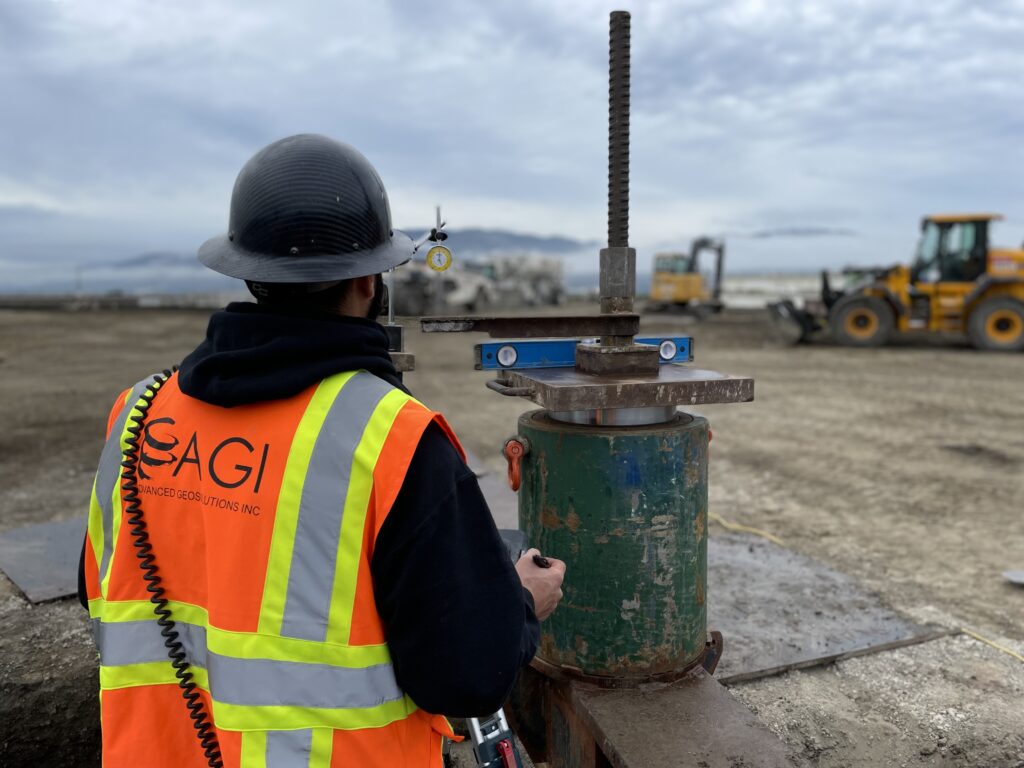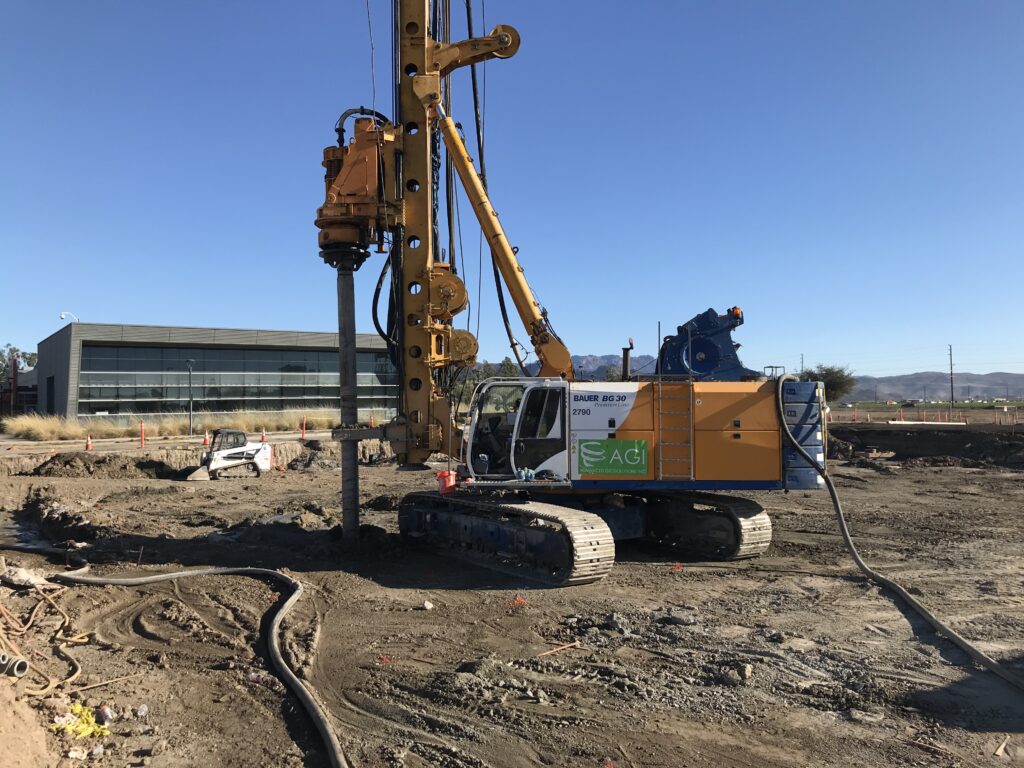Every ground improvement project is unique and requires a thoughtful, individualized approach due to the myriad of soil conditions, performance requirements and potential seismic hazards present at any given site. Varying subsurface conditions can include primarily sandy, silty, clayey soils or anything in between, and depending on the structure, the project will have different load demands.
The evolution of varying ground improvement technologies has helped mitigate many potential problems regardless of how challenging the site conditions may be. A few of these technologies include stone columns/aggregate piers, cement deep soil mixing (CDSM or DSM), rapid impact compaction (RIC) and displacement grouted columns (DGC). However, the project’s performance requirements are a key indicator of which solution will be most suitable for the project site. CDSM columns, steel piles and stone columns are all able to limit settlement and transfer building loads to depth, but each has varying budget impacts and site-specific capabilities. Ultimately, the site soils in conjunction with the project’s design needs are a crucial indicator when choosing the optimal technology required. At AGI we provide recommendations that not only follow best practices but are curated from our years of experience to deliver a successful ground improvement project outcome.

Steps to Choosing the Right Ground Improvement Technology
Specific, key elements will determine which technology is best for each prospective project. These include multiple considerations, most often in tandem with each other. Examples of data required before determining the right ground improvement technology type(s) include the following:
Soil Type + Ground Characterization
The geotechnical report will outline factors such as soil type, groundwater conditions, and tentative design criteria which are guiding principles for determining the most suitable technology needed.
Different soil types impact decisions when determining the most ideal technology. Encountering sites with predominant granular (cohesionless) and/or clayey (cohesive) soils is routine, more and more sites encountered require unique solutions when considering urban/undocumented fills, organics, and contamination (some sites have all these combinations).
Product Type + Load Demand
Upon assessing the best means based on the soil type one must also take into consideration the loading requirements for the proposed structure as well. Is the proposed structure intended to be a hospital? Or a road? Or a bridge? The building type itself, along with the associated loads, will have influence on the most suitable technology choice.
Accessibility
Accessibility factors such as restricted overhead conditions and hazardous elements on the project site are also important considerations. Value engineering capabilities come into play when the project issues are reviewed as a whole, in turn, navigating the project toward the ideal solution (or a blend of solutions) to overcome a variety of challenges simultaneously.
Feasibility
Which technology solutions will be cost-effective and economical? Correct answer: It depends!
Other considerations when assessing the right ground improvement technology include:
- Nearest neighboring buildings and potential vibration issues
- Removing spoils
- Groundwater contamination
- Urban versus rural areas
Additionally, where applicable, seismic hazards such as lateral spread and liquefaction must be included in the decision. Lateral spread develops when soil loses shear strength as a result of cyclical ground motions during an earthquake and is more likely to occur on sloping ground. Liquefaction occurs when loose, cohesionless saturated or partially saturated soil at or near ground surface loses its strength and stiffness caused by strong ground movement. Sites located in seismically active regions are prone to these hazards and therefore must be accounted for when deciding on the best ground improvement solution for the project’s success.
Ground Improvement Technology Types
As mentioned, there are many different types of technology for varying soils and load demands. A few include:
Stone Columns
Stone columns can mitigate liquefaction and increase load-bearing capacity by reinforcing loose, cohesionless soils. They can also reinforce soft cohesive soils to limit settlement and increase the bearing capacity of the improved ground. Stone Columns can also limit the increase in pore pressure due to increasing drainage paths.
Cement Deep Soil Mixing
Cement deep soil mixing (CDSM) improves weak native soils by mixing the soil with a cementitious binding material and has the capability to reduce liquefaction potential by enclosing loose soil in CDSM cells.
Rapid Impact Compaction
Rapid impact compaction (RIC) reduces settlement and increases soil-bearing capacity by densifying loose granular deposits with high-frequency, repetitive pounding.
At AGI, we’re not just ground improvement experts – we’re also design experts. We know the differences between the varying technologies to properly support your project and identify the ideal solution for you. When brought into the process, we can collaborate with other stakeholders involved in the project and help pinpoint the right technology.

How the Ground Improvement Process Works
AGI works alongside the owner, general contractor, project engineers, architects and construction managers for each specific job site. In many cases, the general contractor typically initiates the process by hiring us for the needed project scope.
The architect and engineering team provide the finalized drawings and specifications. Foundations and soil assessments are typically the geotechnical engineer’s responsibility, including bearing capacity to sustain the structure’s loads. Structural engineers determine the loads across the structure applied to the foundations, which are filtered through the geotechnical engineer’s recommendations for the site and ultimately factored into the ground improvement design. At AGI, we ultimately bridge the gap between the structural planning and the soil requirements by factoring both structural and geotechnical engineers’ information into the ground improvement design.
Deploying the right technology for your project is critical to ensure its long-term performance. It’s never a one-size-fits-all approach, as many different factors will influence the final decision. Bringing a ground improvement expert, like AGI, into the process early allows maximum value for the entire project and expands options with more flexibility while mitigating issues as they arise. Contact us today to get your project started and ensure the right technologies are used for your ground improvement needs.
